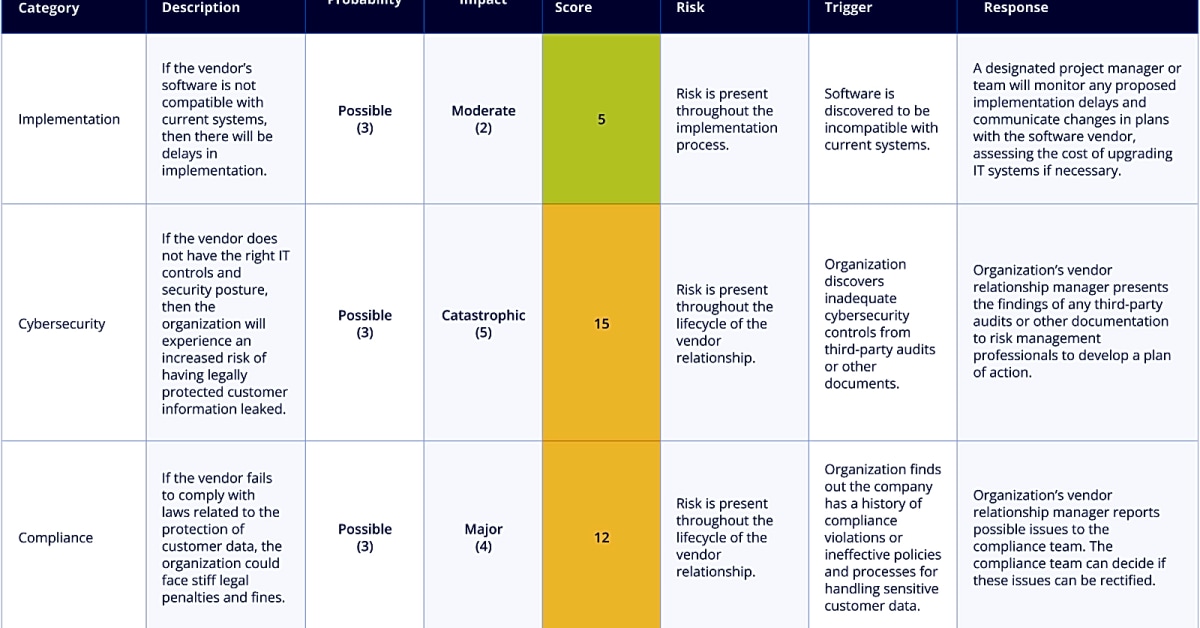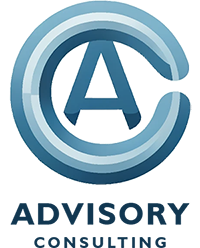Assessing Impact and Likelihood: A Comprehensive Guide to Strategic and Risk Analysis
 by Consultant
by Consultant

In today’s constantly evolving business world, it is crucial for organizations to stay ahead of potential risks and opportunities. This is where strategic and risk analysis comes into play. By assessing the impact and likelihood of different scenarios, companies can make informed decisions that can greatly impact their success. In this comprehensive guide, we will delve into the intricacies of assessing impact and likelihood, providing insights and techniques for conducting effective strategic and risk analysis. Whether you are new to the concept or looking to enhance your current practices, this article will provide valuable information for anyone involved in strategic or risk analysis. So, let’s dive in and discover how to make the most of this crucial aspect of business management.
When it comes to running a successful business, strategy is key. That’s why people often turn to strategy consulting for guidance on improving their business strategy. In this article, we will cover all the important aspects of assessing impact and likelihood in strategic and risk analysis. By understanding these concepts, you can develop a more effective strategy for your organization.
First, let’s define what we mean by assessing impact and likelihood. This refers to the process of evaluating the potential impact and likelihood of various factors on your business strategy. These factors could include market trends, competitor actions, or internal strengths and weaknesses. By assessing these factors, you can make more informed decisions about your strategy moving forward.
We will begin by covering the basics of strategic planning. This includes understanding your company’s overall goals and objectives, identifying potential risks and opportunities, and creating a roadmap for achieving success. We will also discuss how to develop an effective organizational strategy that aligns with your company’s goals.
Next, we will dive into the concept of risk analysis. This involves identifying potential risks to your business and assessing their likelihood of occurring. By understanding these risks, you can develop strategies to mitigate their impact and protect your business.
We will also cover strategic solutions in this article. These refer to the actions you can take to address potential risks or opportunities identified through strategic and risk analysis. We will discuss best practices for implementing these solutions effectively.
Finally, we will touch on the importance of strategic analysis, thinking, and leadership in the overall success of your business strategy. By understanding how to analyze data, think critically, and lead effectively, you can make more informed decisions and drive your organization towards success.
Understanding Strategic Planning
When it comes to running a successful business, having a solid strategy is essential. Strategic planning is the process of developing and implementing a plan to achieve specific goals and objectives. It involves analyzing internal and external factors that can impact the organization, setting clear goals, and creating a roadmap to reach those goals.
By understanding the basics of strategic planning, you can improve your business strategy in multiple ways. First, it allows you to take a more proactive approach to decision-making, rather than just reacting to changes in the market. It also helps you identify potential risks and opportunities, allowing you to adjust your strategy accordingly.
Additionally, strategic planning provides a framework for aligning your organization’s resources and priorities. This helps ensure that everyone in the organization is working towards the same goals and objectives, leading to better coordination and efficiency.
The Role of Strategic Analysis, Thinking, and Leadership
When it comes to running a successful business, strategy is key. That’s why people often turn to strategy consulting for guidance on improving their business strategy. In order to develop a more effective strategy for your organization, it is crucial to understand the role of strategic analysis, critical thinking, and effective leadership.
Strategic analysis involves the evaluation of internal and external factors that can impact a business, such as market trends, competition, and customer needs. By conducting a thorough analysis, businesses can identify potential risks and opportunities, and make informed decisions for their strategy.
Critical thinking is essential in strategic analysis as it allows businesses to question assumptions, evaluate information objectively, and consider different perspectives. This helps in identifying potential blind spots and making strategic decisions that are well-informed and well-rounded.
Effective leadership is another crucial aspect of driving a successful business strategy. Leaders need to have a clear vision, communicate it effectively to their team, and inspire them to work towards achieving it. They also need to be adaptable and make strategic decisions that align with the changing business landscape.
By understanding the importance of strategic analysis, critical thinking, and effective leadership, businesses can develop a more robust and impactful strategy for their organization.
Implementing Effective Solutions
When it comes to running a successful business, it’s important to have a solid strategy in place. However, even the best strategies can be vulnerable to risks and opportunities that may arise. That’s why it’s crucial to not only assess the impact and likelihood of these risks and opportunities, but also to develop and implement effective solutions to address them.
So how can you go about implementing these solutions? The first step is to identify the specific risks or opportunities that need to be addressed. This can be done through thorough strategic and risk analysis, which we have covered extensively in this article.
Once you have a clear understanding of the risks and opportunities, it’s important to prioritize them based on their impact and likelihood. This will help you determine which ones need to be addressed first.
Next, it’s important to brainstorm potential solutions for each identified risk or opportunity. This can involve seeking input from various stakeholders and considering different perspectives.
After evaluating the potential solutions, it’s time to develop a comprehensive plan for implementation. This plan should include specific actions, timelines, and responsible parties.
Finally, it’s crucial to regularly monitor and review the effectiveness of the implemented solutions. This will allow for adjustments to be made if needed and ensure that your organization is prepared for any future risks or opportunities.
Identifying and Assessing Risks
Risk analysis is a crucial component of strategic analysis, as it allows businesses to anticipate and prepare for potential threats that may impact their success. By identifying and assessing risks, businesses can develop strategies to mitigate or avoid them altogether. In this section, we will delve into the importance of risk analysis and provide guidance on how to effectively identify and assess potential risks to your business. Risk Analysis: Why It Matters
As the saying goes, “failing to plan is planning to fail.” This is especially true in the world of business, where unforeseen risks can have significant consequences. Risk analysis allows businesses to proactively identify potential threats and develop contingency plans to minimize their impact. By understanding the likelihood and potential impact of risks, businesses can make informed decisions and take actions to protect their organization.
Identifying Risks
The first step in risk analysis is identifying potential risks that may affect your business. This can include both internal and external factors, such as financial risks, operational risks, regulatory risks, and market risks. To effectively identify risks, businesses can conduct a SWOT analysis (Strengths, Weaknesses, Opportunities, and Threats) or use other risk assessment tools.
Assessing Risks
Once potential risks have been identified, the next step is to assess their likelihood and impact. This involves evaluating the probability of a risk occurring and estimating the potential consequences if it does happen. Businesses can use various techniques, such as risk matrices or qualitative assessments, to determine the level of risk associated with each identified threat.
Taking Action
The final step in risk analysis is taking action based on the results of the assessment. This can involve implementing risk management strategies, such as risk avoidance, risk transfer, or risk mitigation. By having a solid understanding of potential risks and their likelihood and impact, businesses can make informed decisions and develop effective strategies to protect their organization.
By assessing impact and likelihood through strategic and risk analysis, you can make more informed decisions about your business strategy. Remember to regularly review and update your strategy as market conditions and internal factors change. By implementing the concepts covered in this article, you can improve your overall business strategy and drive your organization towards success.
Related Posts
Learn about strategic planning, organizational strategy, and effective solutions in this guide to assessing impact and likelihood.
Business Consulting Articles
- About cookies and cookie consent
- Advisory Consulting
- Business Growth Consulting | Unlocking Your Business Potential
- Business Process Consulting Services Can Improve Your Business
- Organizational Development Consultant
- Privacy Policy
- Strategic Advisory Services Explained: A Comprehensive Guide
- Top 100 Advisory Consulting Terminology
- Top 100 AI as a Service (AIaaS) Terminology
- Top 100 Business Consulting Terminology
- Top 100 Executive Coaching Terminology
- Top 100 Operation Management Terminology
- Top Advisory Consulting Terminology
- Top AI as a Service (AIaaS) Terminology
- Top Business Consulting Terminology
- Top Executive Coaching Terminology
- Top Operation Management Terminology
- AI Generated Q&As
- Benefits of advisory consulting
- Blog
- Boutique Firms
- Budgeting
- Business advisory consulting
- Business Consulting
- Business consulting services
- Business Management
- Business planning
- Case studies on specific industries
- CEO
- CFO
- Change management
- CIO
- Client success stories
- CMO
- Collaboration and partnerships
- Consulting
- COO
- Creative thinking
- Critical thinking skills
- Culture and values
- Executive Coaching
- Expert guidance and insights
- Financial advisory consulting
- Financial analysis
- Financial consulting
- Financial Consulting
- Financial consulting services
- Financial strategies
- Fractional Executive
- Goal setting
- Human Resource Management
- Increased efficiency and profitability
- Industry knowledge and experience
- Insight
- Investing
- IT Consulting
- Leadership and management
- Leadership styles
- Management Consulting
- Management Consulting
- Market analysis
- Market analysis
- Marketing consulting
- Marketing strategies
- Marketing strategies
- Methodologies
- Operational strategies
- Organizational structure
- Process improvement
- Professional qualifications and certifications
- Retirement planning
- Risk analysis
- Risk management and compliance
- Sales techniques
- Scaling and expansion
- Strategic consulting
- Strategic foresight
- Team diversity and collaboration
- Technology advisory consulting
- Technology consulting services
- Technology solutions
- Testimonials from satisfied clients
- Tier 1 Firms
- Tier 2 Firms
- Vision and direction
- What is Advisory?
- What is Consulting?
